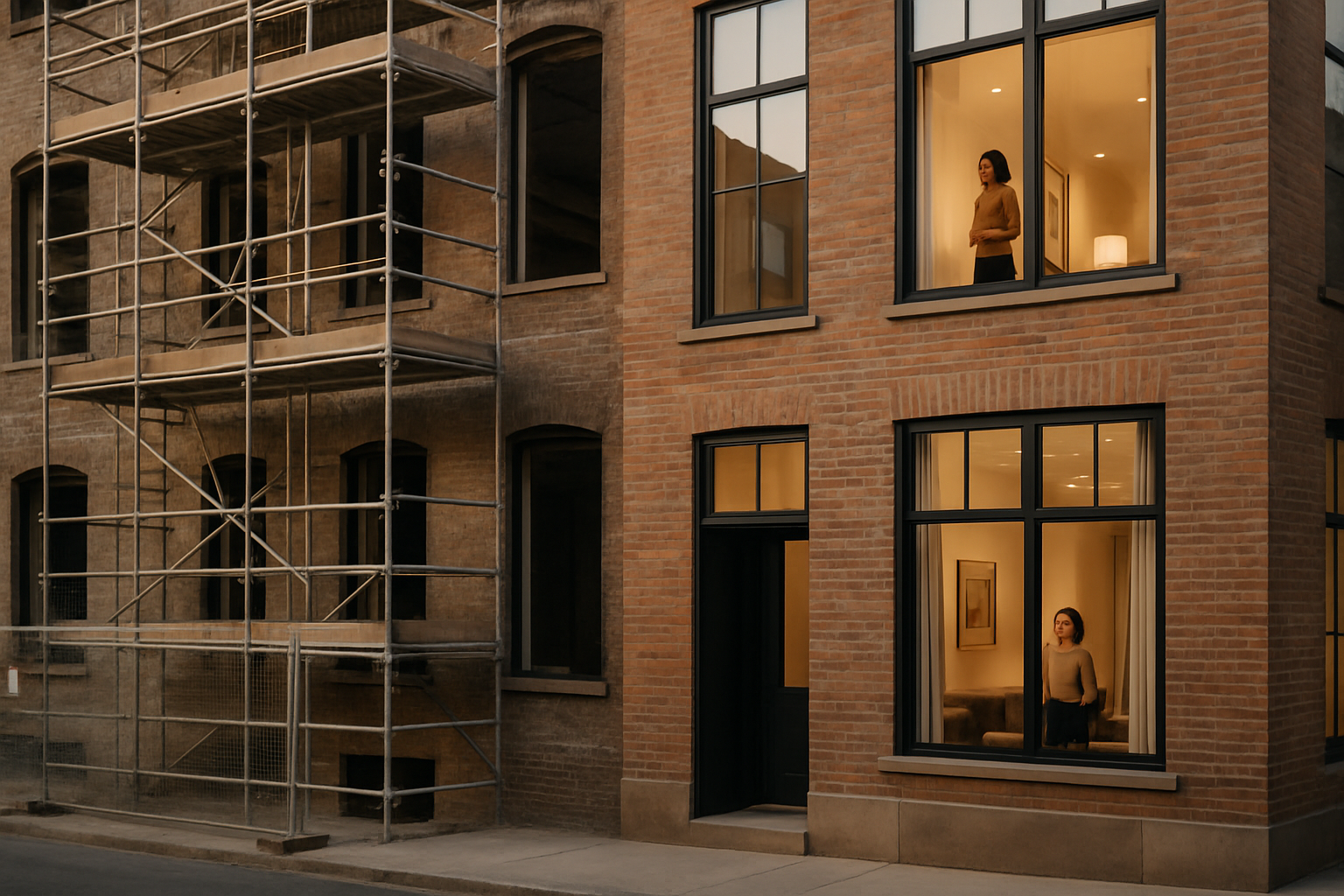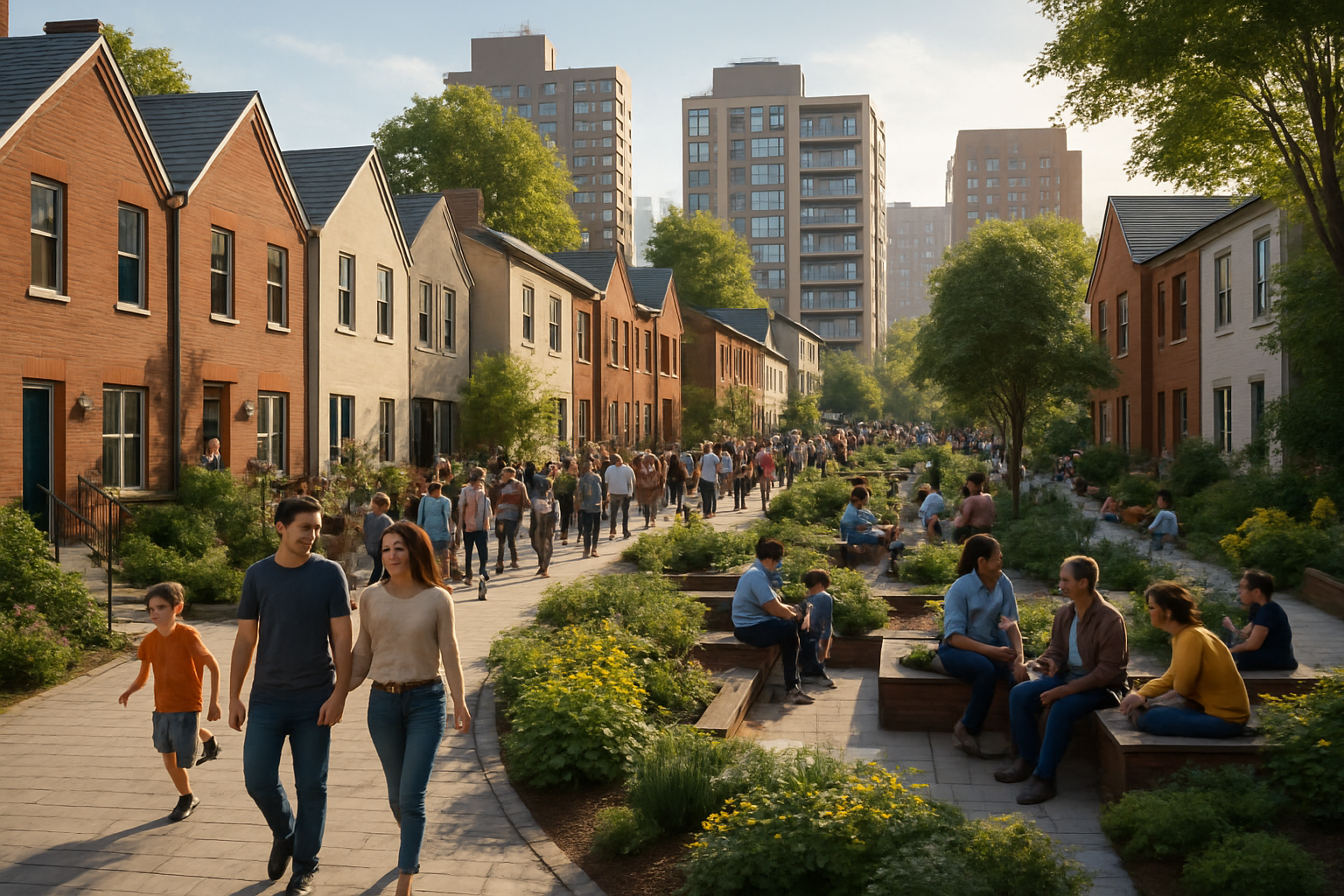Adaptive Reuse: Transforming Industrial Spaces into Urban Homes
In a world where urban landscapes are rapidly evolving, a groundbreaking trend is reshaping the real estate market: adaptive reuse of industrial properties. This innovative approach is not only breathing new life into abandoned factories and warehouses but also redefining urban living. As cities grapple with housing shortages and the need for sustainable development, adaptive reuse offers a compelling solution that marries historical preservation with modern housing demands.

Industrial properties, with their high ceilings, large windows, and open floor plans, provide an ideal canvas for creating distinctive homes. These spaces often boast character-rich features like exposed brick walls, steel beams, and concrete floors, which are highly sought after by urban dwellers seeking an alternative to cookie-cutter apartments.
Economic and Environmental Benefits
The economic advantages of adaptive reuse are significant. Developers often find that repurposing existing structures can be more cost-effective than new construction. This is particularly true in cities with strict building codes or limited available land. Additionally, many municipalities offer tax incentives for projects that preserve historic buildings, further enhancing the financial appeal of adaptive reuse.
From an environmental perspective, adaptive reuse is a sustainable practice that aligns with growing eco-consciousness. By repurposing existing structures, developers reduce the need for new materials and minimize construction waste. This approach also helps preserve the embodied energy of the original building – the energy consumed by all the processes associated with its production.
Challenges in Conversion
While adaptive reuse offers numerous benefits, it also presents unique challenges. One of the primary hurdles is bringing old buildings up to modern building codes and safety standards. This often involves extensive structural reinforcement, updating electrical and plumbing systems, and ensuring proper insulation and ventilation.
Contamination is another significant concern, particularly in former industrial sites. Environmental assessments and potential remediation can add substantial costs and time to a project. Developers must carefully weigh these factors against the potential returns when considering an adaptive reuse project.
Market Demand and Target Demographics
The appeal of industrial-to-residential conversions spans various demographic groups. Millennials and young professionals are particularly drawn to these unique spaces, valuing their urban locations and distinctive character. Empty nesters looking to downsize and move to vibrant city centers also find these properties attractive.
Market research indicates that properties resulting from adaptive reuse often command premium prices due to their uniqueness and desirable locations. This trend is reshaping urban neighborhoods, sometimes leading to gentrification concerns that developers and city planners must address.
Case Studies: Success Stories in Adaptive Reuse
Numerous cities worldwide have seen successful adaptive reuse projects that have revitalized neighborhoods and created sought-after living spaces. In New York City, the Puck Building in SoHo, once a printing house, now houses luxury penthouses that blend historical architecture with modern amenities. In London, the Battersea Power Station redevelopment has transformed an iconic industrial landmark into a mixed-use community with high-end apartments.
These projects demonstrate the potential of adaptive reuse to create vibrant, livable spaces while preserving architectural heritage. They serve as inspiration for developers and city planners looking to breathe new life into underutilized industrial areas.
Future Outlook and Investment Potential
As urban populations continue to grow and the demand for unique living spaces increases, the trend of adaptive reuse is likely to accelerate. Investors and developers who can identify suitable industrial properties for conversion stand to benefit from this growing market segment.
However, success in this niche requires a deep understanding of local real estate markets, zoning laws, and historical preservation regulations. It also demands creativity and vision to see the potential in often dilapidated structures.
A New Chapter for Urban Living
Adaptive reuse of industrial spaces represents a compelling intersection of preservation, innovation, and urban development. As cities evolve, these projects offer a way to honor the past while meeting the housing needs of the future. For real estate professionals, investors, and urban planners, industrial-to-residential conversions present an exciting opportunity to shape the future of urban living while creating unique, sustainable homes that resonate with modern buyers.
As this trend continues to gain momentum, it’s clear that the transformation of industrial spaces into urban homes is more than just a passing fad – it’s a significant shift in how we approach urban development and housing. By reimagining these spaces, we’re not just creating homes; we’re crafting stories, preserving history, and building communities that bridge the gap between industrial heritage and contemporary urban life.





